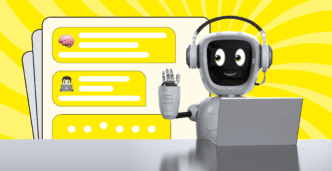Google has laid off hundreds of employees across its Android, Pixel, and Chrome divisions, marking a major shift in strategy as the company doubles down on artificial intelligence. The decision, which affects Google’s core platforms and devices unit, reflects a growing trend across the tech industry: streamlining legacy operations to make way for AI innovation.
The layoffs come just months after Google offered voluntary exit packages to employees in this same division. That offer, now seen as a precursor, hinted at deeper restructuring plans. A spokesperson from Google confirmed that the company is realigning teams for greater agility, efficiency, and focus on emerging technologies.
“Since merging our platforms and devices teams, we’ve been working to streamline operations,” the spokesperson explained. “This has involved both voluntary exits and some necessary job reductions.”
AI Push Drives Restructuring
Google’s latest move is part of a broader pivot within Big Tech. Major players are investing heavily in AI infrastructure, cloud computing, and data centers—often at the expense of more mature product lines. By shifting resources away from long-established units like Android and Chrome, Google is signaling its commitment to staying ahead in the AI race.
The company is not alone. Over the past year, several tech giants have made similar cuts to free up funds and talent for AI-related projects. Amazon recently announced plans to eliminate 14,000 management roles in a move to reduce expenses by $3.5 billion. Meta also let go of 5% of its workforce earlier this year, focusing instead on hiring machine learning specialists. Microsoft trimmed 650 jobs in its Xbox division, and even Apple—typically quiet during layoff cycles—reduced staff in its digital services group.
Cloud and Consumer Units Affected
Google’s cloud division has also seen some targeted layoffs. While the company described these as limited, they still point to a careful reshuffling of internal priorities. The cuts underscore a broader pattern: Google’s long-standing consumer-facing units are being reevaluated as AI takes center stage.
Back in January 2023, Google made headlines by cutting 12,000 roles—roughly 6% of its global workforce. That round of layoffs marked the beginning of a workforce reset, aimed at reallocating resources toward higher-growth areas. Fast forward to today, AI dominates the agenda in internal strategy memos and investor calls.
Tech Layoffs in 2025 Continue to Climb
According to Layoffs.FYI, a platform that tracks job cuts in the tech sector, 93 companies have already eliminated over 23,500 roles in 2025 alone. With AI becoming the top investment priority, legacy departments are increasingly being viewed as cost centers rather than innovation hubs.
Google’s latest workforce cuts, while significant, are just one part of a wider industry transformation. As competition intensifies in AI development, the need for leaner, more focused teams is becoming the new norm across Silicon Valley.












